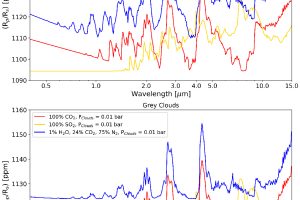Una super-Terra attorno una vecchia e poco attiva stella M. L’articolo: “GJ 357 b. A super-Earth orbiting an extremely inactive host star” di Modirrousta-Galian (UNIPA/INAF-OAPA) pubblicato su A&A

Nonostante argomenti teorici suggeriscano che i pianeti di tipo terrestre siano estremamente comuni nella nostra Galassia, la famiglia dei 4284 esopianeti scoperti e confermati finora (25/9/2020, fonte NASA) conta relativamente pochi pianeti di tipo terrestre. Questa chiaramente è una limitazione dei metodi usati per individuare gli esopianeti, che risultano essere poco sensibili ai pianeti di piccola massa. Per questo motivo, quindi, i pochi pianeti di tipo terrestre scoperti finora sono di grande importanza per studiare le proprietà, la formazione e l’evoluzione di questa classe di esopianeti.
Una delle super-Terre particolarmente vicine alla Terra è stata identificata attorno la stella di classe spettrale M GJ 357, distance 30.8 anni luce dal Sole, e con una massa di 0.34 Masse Solari. Il pianeta transitante (GJ 357 b) è stato scoperto dal satellite della NASA TESS (Transiting Exoplanet Survey Satellite), ha una massa di 1.8 Masse Terrestri e un raggio di 1.22 Raggi Terrestri, parametri tipici appunto di pianeti di tipo terrestre. Il sistema planetario di GJ 357 ospita altri due pianeti non transitanti con una massa maggiore di quella di GJ 357 b.
Allo scopo di comprendere meglio le proprietà di GJ 357 b, nonché la sua evoluzione, il team internazionale guidato dall’astrofisico D. Modirrousta-Galian (Università degli Studi di Palermo e INAF – Osservatorio Astronomico di Palermo) ha analizzato osservazioni ai raggi X di GJ 357 ottenute dal satellite dell’ESA XMM-Newton nell’ambito di una campagna osservativa mirata all’analisi ai raggi X di stelle di classe spettrale M vicine al Sole. Gli autori dello studio hanno calcolato una luminosità ai raggi X particolarmente bassa (log(Lx)[erg/s]=25.73), compatibile con un’età dell’intero sistema di almeno 5 miliardi di anni. Data la massa di GJ 357 b, è improbabile che il pianeta abbia avuto un’atmosfera primordiale. Ciò nonostante, vulcanismo e altri fenomeni geologici potrebbero aver prodotto un’atmosfera secondaria. Grazie alla stima dell’età del sistema, dell’evoluzione della luminosità X della stella, e dei parametri stellari e planetari, gli autori hanno riprodotto tre modelli dell’atmosfera di GJ 357 b: un’atmosfera composta al 100% da CO2, una composta al 100% SO2, o composta al 75% da N2, 24% CO2 e 1% H2O. Lo studio è descritto nell’articolo: “GJ 357 b. A super-Earth orbiting an extremely inactive host star“, recentemente pubblicato sulla rivista Astronomy & Astrophysics. Tra i coautori, gli astronomi B. Stelzer, J. Maldonado e G. Micela dell’INAF – Osservatorio Astronomico di Palermo.
La figura (cliccare qui per visualizzare l’immagine interamente) mostra gli spettri sintetici prodotti per l’atmosfera di GJ 357 b. I tre colori identificano le tre diverse composizioni: 100% CO2 in rosso, 100% SO2 in giallo, e 75% N2, 24% CO2 e 1% H2O in blu. Gli spettri sintetici sono calcolati sia nel caso di un’atmosfera priva di nubi (pannello in alto) che di nubi alla pressione di 0.01 bar (pannelli in basso).
